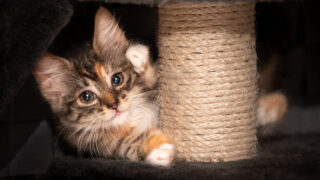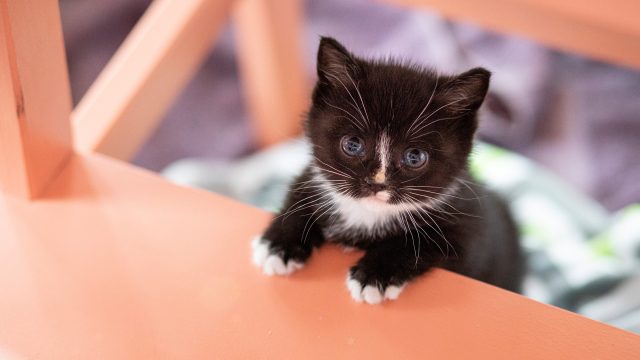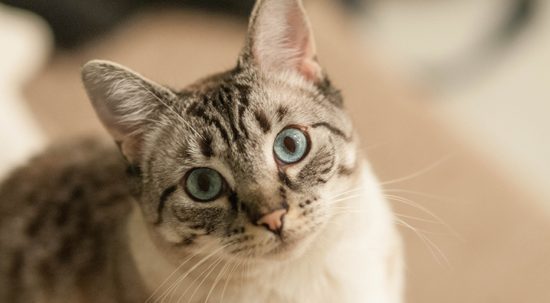
Nearly 70 Percent of Veterinary Professionals Oppose Cat Declawing as States Seek to Ban the Procedure
New poll underscores the surge of support from the veterinary community to ban the cruel practice.
Contact: media@aldf.org
SAN FRANCISCO — An invasive surgical procedure, sometimes misconstrued as a ‘quick fix’ to stop cats from scratching furniture in the past, has become a prominent topic in legislatures across the country. New York, Maryland, and Washington, D.C., have already banned declawing cats with narrow exceptions for a cat’s health, and Virginia has banned the procedure with limited exemptions. More states are considering the measure — with significant support from the veterinary community.
The Animal Legal Defense Legislative Fund announced new poll results showing that veterinary professionals overwhelmingly oppose cat declawing — a surgical procedure consisting of a series of amputations involving the last bones of a cat’s 10 front toes. Not only is the procedure painful, but it can also cause lifelong pain in the paws, bleeding, infection, tissue death, nerve damage, arthritis, loss of balance, back pain, and even lameness.

Animal Legal Defense Legislative Fund National Poll Results
Veterinary Perspectives on Cat Declawing: National and Northeast
Results from the poll include:
- 70 percent of veterinary professionals oppose cat declawing.
Results by age and experience:
- 85 percent of veterinary professionals under age 50 oppose cat declawing.
- 90 percent of veterinary professionals with less than 10 years of experience would support a statewide ban.
- 67 percent of veterinary professionals with 11 to 20 years of experience would support a statewide ban.
“If the severity and impact of declawing procedures were better understood by the public, this practice would have been banned long ago,” says Animal Legal Defense Legislative Fund Executive Director Kim Kelly. “The data shows a shift in priorities for veterinary professionals — with younger generations putting cats’ health and well-being before upholstered furniture.”
Declawing, or onychectomy, is a serious medical procedure in which a cat’s third phalanges (toe bones) and claws are surgically removed. The American Veterinary Medical Association states that it “should be regarded as major surgery.” The procedure is commonly performed for convenience, such as preventing the animals from scratching furniture, rather than for the cat’s well-being.
Chronic pain from the procedure can lead to unwanted behavioral responses, such as an increased tendency to bite due to the removal of the cat’s first natural defense mechanism, and litter box avoidance due to pain when stepping in litter.
Some of the rationales provided by the participants of the poll for opposing declawing cats included shifting public sentiment about declawing as unacceptable, changing perceptions about cats as family members, the availability of non-invasive alternatives, veterinarians’ increased education of clients on the surgery, and newer veterinarians’ opposition to the procedure challenging older perceptions.
In addition to the states that have already passed bans, legislation has been introduced in Arizona, California, Florida, Illinois, Massachusetts, Michigan, Minnesota, New Hampshire, New Jersey, Pennsylvania, and Rhode Island. Many large cities have jurisdictional bans, including Los Angeles, San Francisco, Pittsburgh, Madison, West Hollywood, Austin, Denver, Beverly Hills, Berkeley, and Washington, D.C.
Focus Area
Related
-
ALDF Urges Justice for Cat Victims in Elkhart County
The county’s prosecutor dismissed criminal charges against the manufacturing plant employees who killed two feral cats in a trash compactorAugust 11, 2025 News -
Rhode Island Governor Signs Cat Declaw Ban into Law
Declawing is an invasive surgical procedure to remove the last bone in a cat's toesJuly 2, 2025 News -
Downers Grove, Illinois Passes Ordinance Prohibiting Cat Declawing
Declawing is a cruel surgical procedure to remove the last bone in a cat's toesFebruary 21, 2025 News
Sign Up!
Join the Animal Legal Defense Fund's email list to stay up to date on lawsuits, legislation, and regulations affecting animals.




